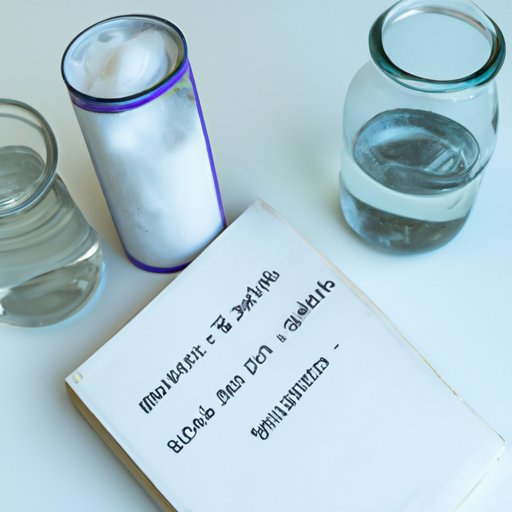
Introduction
If you’ve ever tried cleaning with baking soda and vinegar, you know how powerful this mixture can be. But what’s the science behind it? And are there any dangers to mixing these two unlikely ingredients? In this article, we’ll explore the chemistry, applications, and safety considerations of baking soda and vinegar. We’ll also suggest some fun experiments to try with kids, beauty remedies to pamper yourself, and eco-friendly cleaning solutions for your home.
The chemistry behind baking soda and vinegar
Baking soda is a base and vinegar is an acid. When they are mixed, they react and create carbon dioxide gas, water, and sodium acetate. This reaction is exothermic, meaning it produces heat. The gas bubbles help to dislodge dirt and grime, making the mixture an effective cleaning agent for a variety of surfaces. Additionally, because baking soda and vinegar are natural substances, they are less harmful to the environment than many chemical cleaners.
You can use this mixture to clean and deodorize sinks, toilets, showers, ovens, and even laundry. Simply sprinkle baking soda, add a small amount of vinegar, and watch the magic happen.
The safe and unsafe ways to mix baking soda and vinegar
While baking soda and vinegar are generally considered safe, there are a few important things to keep in mind when mixing them. For example, never mix baking soda and vinegar in a closed container, as the build-up of gas pressure could cause an explosion. Additionally, avoid using the mixture on delicate surfaces such as marble or granite, as the abrasiveness of the baking soda could cause damage.
A safe and effective way to use baking soda and vinegar is to sprinkle the baking soda onto the surface you want to clean, then spray or pour vinegar on top. Let the mixture sit for a few minutes, then scrub and rinse with water.
It’s also important to note that while baking soda and vinegar can remove some stains, they are not a cure-all for every cleaning problem. Use them in combination with other methods, or consult a professional cleaner if you’re dealing with a particularly stubborn stain or odor.
Baking soda and vinegar as eco-friendly alternatives
One of the biggest advantages of using baking soda and vinegar for cleaning is that they are environmentally friendly. Unlike many commercial cleaners, they are biodegradable and non-toxic. This means that after you’re done cleaning, the residue won’t harm the soil, water, or air. Additionally, because they are inexpensive and readily available, they can help reduce waste and saves you money.
The uses of baking soda and vinegar for cleaning are practically endless. You can use them to clean carpets, furniture, windows, and appliances. They can also be used as a fabric softener in your laundry, or as a natural scrub for your pots and pans.
For a natural drain cleaner, pour a cup of baking soda down the drain, followed by a cup of vinegar. Wait a few minutes, then pour boiling water down the drain to flush out any remaining debris.
Science projects kids can do with baking soda and vinegar
Baking soda and vinegar can also be the basis for some fun and educational science experiments that you can do with your kids. For example, you can make a volcano by mixing baking soda and vinegar in a bottle. The carbon dioxide gas will create pressure, causing an eruption. You can also make a balloon inflate by mixing baking soda with vinegar, then placing the balloon over the opening of the bottle.
Another cool experiment is to mix baking soda and vinegar in a baggie, then watch as the baggie fills up with gas. This experiment demonstrates the gas created when the acid (vinegar) and base (baking soda) interact.
Unconventional beauty uses of baking soda and vinegar
Besides cleaning and science experiments, baking soda and vinegar can also be used to pamper your skin and hair. For example, you can use baking soda as a gentle exfoliant to slough off dead skin cells. Mix a tablespoon of baking soda with a few drops of water to make a paste, then apply it to your face in a circular motion. Rinse with water to reveal a softer, brighter complexion.
Vinegar can also be used as a natural hair rinse to remove buildup and restore shine. Mix a tablespoon of vinegar with a cup of water, then pour it over your hair after shampooing. Let it sit for a few minutes, then rinse thoroughly with water.
Combine baking soda and vinegar to make a natural deodorant that’s gentle on your skin. Mix a tablespoon of baking soda and a teaspoon of water to make a paste, then add a few drops of vinegar. Apply the mixture to your underarms and let it dry.
Experimenting with baking soda and vinegar
Finally, if you’re feeling curious, you can experiment with baking soda and vinegar to see what happens when you mix different amounts or use different containers. For example, you can mix baking soda and vinegar in different ratios and observe how the reaction changes. Or you can mix them in a closed container and see what happens. Just remember to practice caution, wear protective goggles, and work in a well-ventilated area.
Conclusion
As you can see, baking soda and vinegar are a versatile and effective duo that can be used for cleaning, science experiments, beauty remedies, and more. By understanding the chemistry behind these natural substances, you can use them safely and effectively to clean your home, entertain your kids, and pamper yourself. So the next time you’re looking for an eco-friendly cleaning solution or a fun weekend project, reach for the baking soda and vinegar and let the magic happen.




